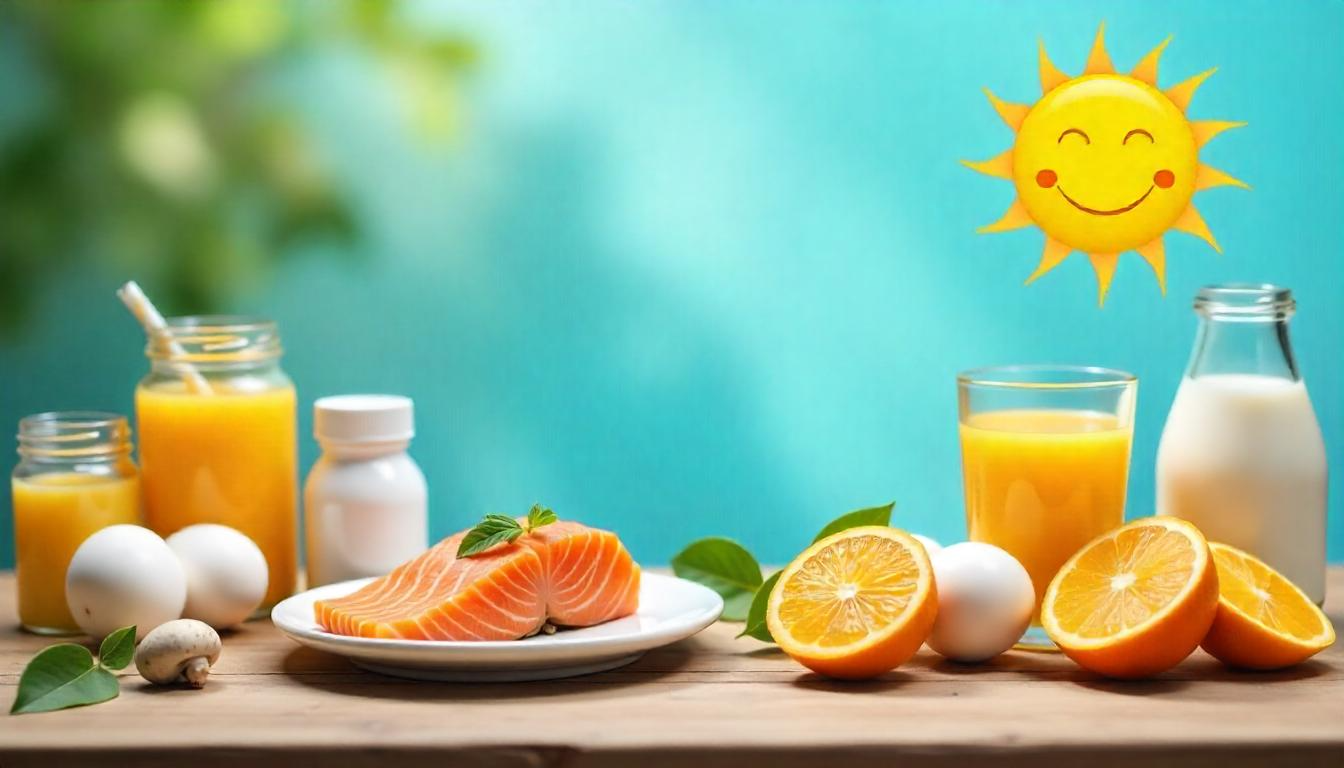The top 10 Vitamin D-rich foods Commonly Found in the United States are essential for maintaining strong bones, a healthy immune system, and optimal well-being. In the United States, millions of people are affected by Vitamin D deficiency, often without realizing it. While supplements are a helpful option, many everyday foods naturally provide this crucial nutrient. In this article, we’ll explore the top 10 Vitamin D-rich foods easily available in the U.S., backed by science and suitable for any diet.. In the United States, millions of people are affected by Vitamin D deficiency, often without realizing it. While supplements are a helpful option, many everyday foods naturally provide this crucial nutrient. In this article, we’ll explore the top 10 Vitamin D-rich foods easily available in the U.S., backed by science and suitable for any diet.
Why You Need Vitamin D-Rich Foods in the U.S.
Vitamin D supports calcium absorption, strengthens bones, boosts the immune response, and benefits mental health. However, many people in the U.S. experience deficiency due to limited sun exposure and spending more time indoors, especially during long winters.
Read more: Signs of Low Vitamin D
How Much Vitamin D Do Americans Need Daily from Vitamin D-Rich Foods in the U.S.?
According to the NIH, the recommended daily intake of Vitamin D is:
- Infants (0–12 months): 400 IU
- Children and adults (1–70 years): 600 IU
- Adults over 70 years: 800 IU
- Pregnant and breastfeeding women: 600 IU
Full guide: How Much Vitamin D Should You Take Daily in the United States
Top 10 Vitamin D-Rich Foods Commonly Found in the U.S.
1. Salmon – A Top Vitamin D-Rich Food in the U.S.
One of the best natural sources of vitamin D is fatty fish, such as salmon, that is obtained in the wild. A serving of 3.5 ounces contains roughly 600–1000 IU.
Shop now: Wild-Caught Salmon on Amazon
2. Fortified Milk
In the United States, the majority of cow’s milk is fortified with 100 IU of vitamin D per cup. It is among the most readily available food sources.
3. Fortified Cereal
Vitamin D is added to brands like Cheerios and Total, which is particularly helpful for breakfast enthusiasts. Simply look for “Vitamin D2” or “D3” on the label.
4. Egg Yolks
About 40–50 IU of vitamin D is found in one egg yolk. Eggs reared on pasture or free-range frequently have greater amounts.
5. Tuna (Canned)
Canned tuna is widely accessible and reasonably priced, with each 3-ounce meal containing around 200 IU.
6. Sardines
With roughly 270 IU of vitamin D per two sardines, these little, greasy fish are high in both calcium and vitamin D.
7. Fortified Orange Juice
Each serving of well-known brands like Tropicana contains 100 IU of Vitamin D. It’s an excellent choice for non-dairy drinkers and vegetarians.
8. Mushrooms (UV-Exposed)
Vitamin D is only naturally produced by mushrooms that are exposed to UV radiation. Portobello and maitake are excellent options.
9. Cheese (Swiss, American)
Some cheeses provide 6–12 IU per slice, which adds up over time, but they are not a significant source.
10. Cod Liver Oil
More than 400 IU of vitamin D and omega-3 fatty acids can be found in one teaspoon.
Related read: Best Vitamin D Supplements in the United States
Best Practices to Maximize Absorption
- Pair Vitamin D-rich foods with healthy fats for better absorption.
- Get 10–15 minutes of sunlight a few times a week.
- Avoid overcooking fish and eggs to preserve nutrient content.
Trusted External Resource
Learn more from the Cleveland Clinic’s article on Vitamin D: Benefits, Sources, Deficiency Symptoms & More.
FAQs About Vitamin D-Rich Foods in the U.S.
Q1: Can I get enough Vitamin D from food alone?
It’s feasible, but most individuals also require sunshine or supplements, particularly during the winter.
Q2: Are fortified foods as effective as natural sources?
Yes, fortified foods contain bioavailable forms of Vitamin D and are beneficial.
Q3: Can plant-based foods provide enough Vitamin D?
You can rely on plant-based sources like UV-exposed mushrooms for Vitamin D. Fortified plant milks also offer a helpful boost.
Q4: Can too much Vitamin D from food be harmful?
Food by itself is unlikely to do it. The most common cause of toxicity is overuse of supplements.
Conclusion: Boost Your Health with Vitamin D-Rich Foods in the U.S.
Your health depends on Vitamin D, and adding these ten readily accessible items to your American diet can have a significant impact. From fortified milk to wild-caught salmon and mushrooms, these options are convenient and healthful.
Also read: Vitamin D Deficiency in the United States
Need help deciding between Vitamin D2 and D3? Vitamin D vs D3 in the United States
Call to Action
Start by adding one or two of these Vitamin D-rich foods to your meals this week. Share this guide with friends or family who may be at risk of Vitamin D deficiency. For supplement suggestions, check out our curated Amazon recommendations.
Disclaimer
This article is for informational purposes only. Always consult with a licensed healthcare professional before making dietary changes or taking supplements.
Written by the team at FitFusionBlogs — your trusted source for health and wellness tips tailored for the U.S. audience.



